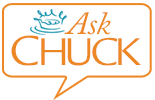Everything you need to know about negative interest rates
To learn Biblical answers to your financial questions, you can #AskChuck @AskCrown your questions by clicking here. Questions used may be lightly edited for length or clarity.

Dear Chuck,
I can’t wrap my head around negative interest rates. What does this mean for my savings accounts in the bank? Can you help me figure this out?
Confused about Rates
Dear Confused,
You are not the only one who finds this a challenge to understand. Simply put, it inverts the model that we have known and practiced for years: putting savings (money) in the bank to earn interest not to pay interest!
Some History and Bigger Picture
Negative interest rates have historically been used to combat deflation. Finance writer Justin Kuepper explains,
“...deflation causes people and businesses to hoard cash rather than spending and investing it, which reduces demand for products and services and puts downward pressure on prices. Lower prices can lead to reduced profits and less economic growth, which in turn leads consumers to hoard even more cash.”
The European Central Bank introduced a negative interest rate policy in 2014. The Bank of Japan did it in 2016. Bloomberg reports that negative rates have been available on short-term mortgage bonds in Denmark since May, but only recently made directly available to consumers.
Now, Denmark’s third largest bank is offering a 10-year fixed-rate mortgage at an interest rate of negative 0.5%. Other lenders there are offering 0% on a 20-year fixed-rate and 0.5% on 30-year fixed-rate mortgages.
Why is this seemingly upside down practice gaining ground and may be coming to the US? Nervousness about the economy. There’s uncertainty in the US-China trade war, Brexit and a generalized economic slowdown.
Lise Nytoft Bergmann, the chief analyst at Nordea’s home finance unit in Denmark, reflects:
It’s an uncomfortable thought that there are investors who are willing to lend money for 30 years and get just 0.5% in return.It shows how scared investors are of the current situation in the financial markets, and that they expect it to take a very long time before things improve.
Stimulus for Economic Growth?
“Thegoal of negative interest rates is to put economic stimulus on steroids.” Policy makers and bankers are incentivizing you and I to stop saving and do more spending or investing.
Neuberger Berman for Seeking Alpha reports:
What we have learned so far from the short history of NIRP (Negative Interest Rate Policy) is mixed at best. Economies that implemented this policy approach experienced an initial bounce in financial conditions, economic activity and inflation dynamics, but the gains did not last long.
Considering such middling results, we are left wondering whether we are witnessing the limitations of monetary policy...
John Tobey at Forbes reports that negative interest rates are already here as evidenced by the loss in the dollar’s purchasing power.
So, a $100,000 investment in July 2009 would have grown to $105,076 by July 2019. However, $1.00 in July 2019 dollars is worth only $0.823 in July 2009 dollars. That means the current $105,076 investment is worth only $86,480 in 2009 dollars, a purchasing power loss of $13,520.
How to Respond
I believe that negative interest rates means those that are trying to jump start the economy have very limited options remaining or this would never happen. However, there are always two sides of the coin to consider.
Pros:
- Some companies buy negative rate bonds to reduce the risk of greater losses
- Affordable borrowing for businesses to expand and hire more workers
- Lower rates and job growth creates a housing (real estate) stimulus
Cons:
- Individuals and businesses borrow too much
- Punishes individual savers
How will the government address future problems? How will negative rates impact taxes?
My friend, Jerry Bowyer, offers an informative look at Theories Driving Economics Today. It’s worth the read.
If our government could build consumer confidence we would see real economic stimulus. But, in light of America’s political and cultural polarization, questionable journalism practices, and fear that policy makers have very limited options at their disposal, that may be difficult to achieve.
What to Do
If your financial institution implements a negative interest rate policy that impacts your existing savings, remember the following:
- Be slow and wise in determining if, when, and where to move your savings account.
- Do your homework to find the best options.
- Don’t panic or take high risk alternatives in desperation.
- This too will pass.
Regardless of what happens with interest rates and monetary theory, we must keep our eyes focused on the Lord, walking in humility, integrity, and faith.
Thus says the Lord: “Let not the wise man boast in his wisdom, let not the mighty man boast in his might, let not the rich man boast in his riches,but let him who boasts boast in this, that he understands and knows me, that I am the Lord who practices steadfast love, justice, and righteousness in the earth. For in these things I delight, declares the Lord.” (Jeremiah 9:23-24 ESV)





























